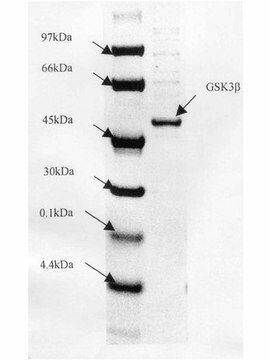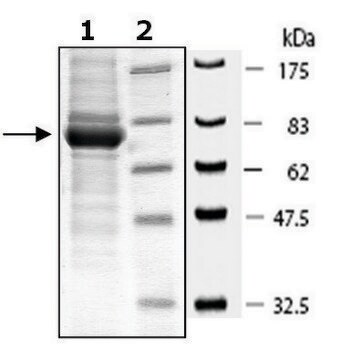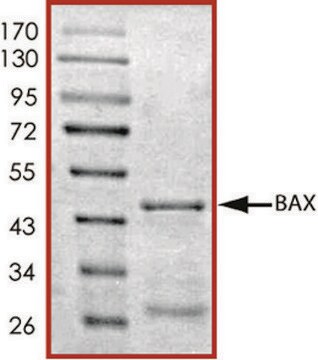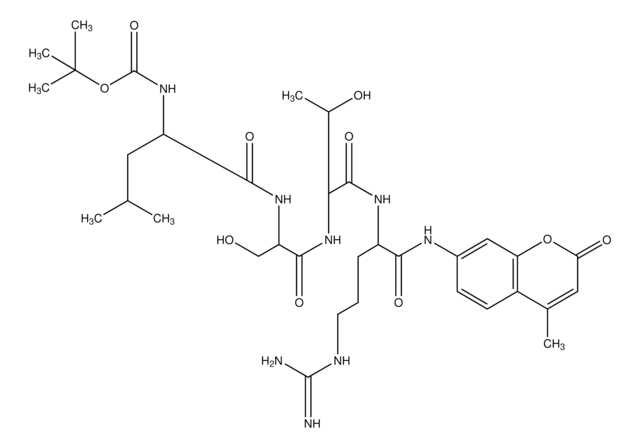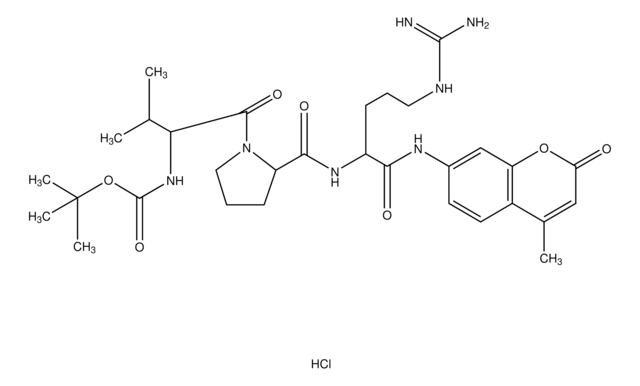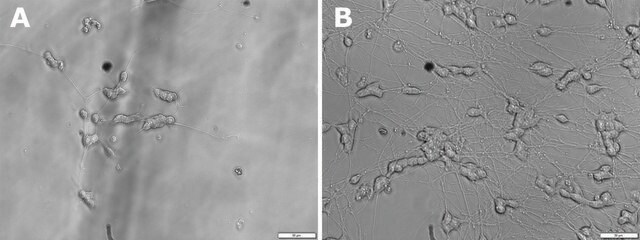SRP0356
GSK3β active human
recombinant, expressed in baculovirus infected Sf9 cells, ≥80% (SDS-PAGE)
Sinônimo(s):
glycogen synthase kinase 3 beta
About This Item
Produtos recomendados
fonte biológica
human
recombinante
expressed in baculovirus infected Sf9 cells
Ensaio
≥80% (SDS-PAGE)
Formulário
aqueous solution
atividade específica
≥500 pmol/min-μg
peso molecular
73 kDa
embalagem
pkg of 10 μg
técnica(s)
activity assay: suitable
inhibition assay: suitable
nº de adesão NCBI
nº de adesão UniProt
Condições de expedição
dry ice
temperatura de armazenamento
−70°C
Informações sobre genes
human ... GSK3B(2932)
Descrição geral
Aplicação
Ações bioquímicas/fisiológicas
Código de classe de armazenamento
12 - Non Combustible Liquids
Classe de risco de água (WGK)
WGK 1
Ponto de fulgor (°F)
Not applicable
Ponto de fulgor (°C)
Not applicable
Escolha uma das versões mais recentes:
Certificados de análise (COA)
Não está vendo a versão correta?
Se precisar de uma versão específica, você pode procurar um certificado específico pelo número do lote ou da remessa.
Já possui este produto?
Encontre a documentação dos produtos que você adquiriu recentemente na biblioteca de documentos.
Nossa equipe de cientistas tem experiência em todas as áreas de pesquisa, incluindo Life Sciences, ciência de materiais, síntese química, cromatografia, química analítica e muitas outras.
Entre em contato com a assistência técnica